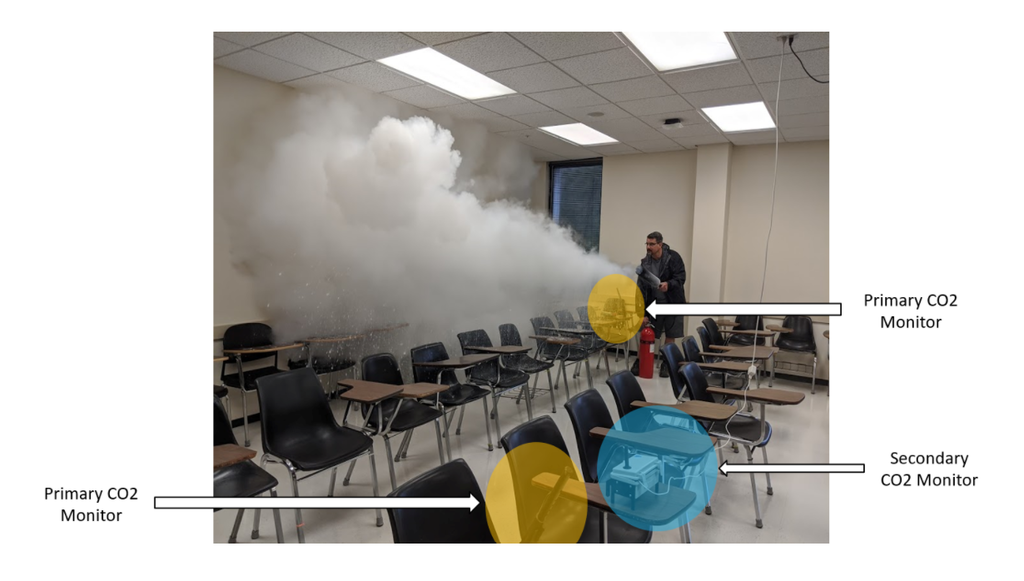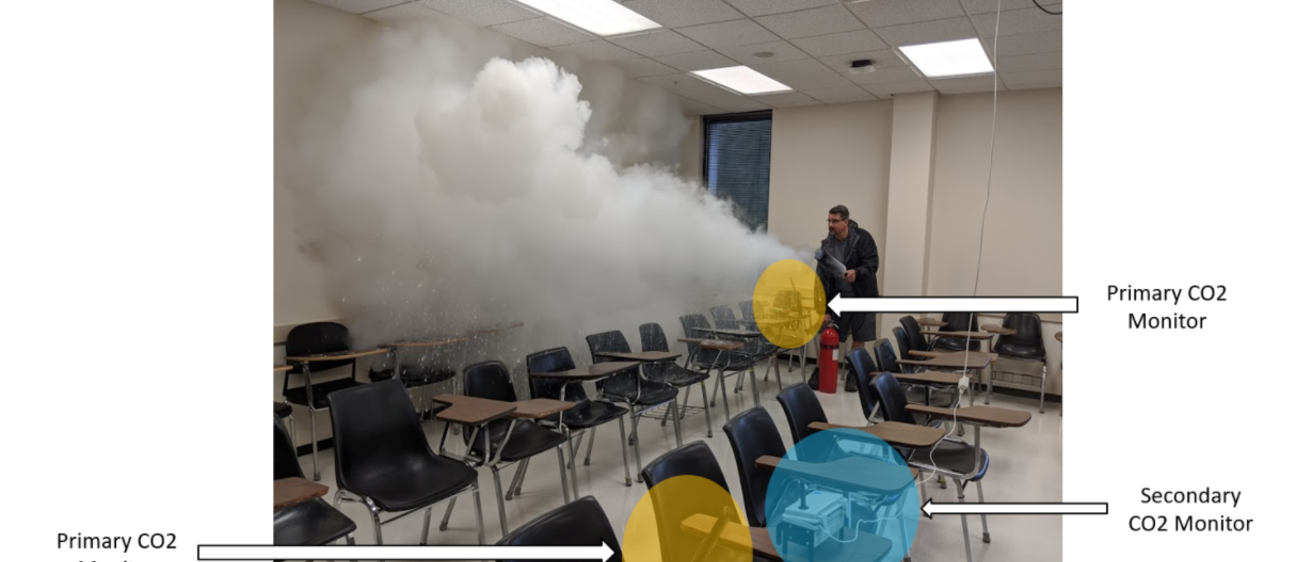As researchers work to better understand the virus that causes COVID-19, it’s become clear that airborne transmission is a serious threat, particularly in indoor areas such as classrooms.

Tiny airborne particles as small as 0.5 microns can linger in the air for hours in poorly ventilated spaces, potentially spreading COVID-19. How small are these aerosols? For comparison, a human hair measures about 90 microns in diameter.
IIHR Research Engineer Charles Stanier was part of an effort to learn which classrooms at the University of Iowa (UI) are the best for in-person classes. Stanier, who is also a professor of chemical and biochemical engineering, conducted the project with Professor Tom Peters of public health, as well as colleagues at Facilities Management (FM). Stanier was a member of the ad hoc ventilation subcommittee, which began thinking about indoor transmission and its relationship to ventilation in spring of 2020 to advise the university’s COVID-19 response. Stanier and his colleagues developed scoring systems for university classrooms, a simple test for airflow measurement, and an Airborne Transmission Estimator to determine the relative safety of various classrooms. They used these tools to make recommendations on classroom occupancy level, to provide evidence in favor of a $200,000 filter upgrade across campus, and to adjust air flow rates. The researchers took measurements in about a dozen classrooms to provide data to evaluate and ground-truth their calculations.

The Airborne Transmission Estimator is an Excel spreadsheet that uses input data on air flow, air filters, fresh air, and ventilation. Stanier says that Jose-Luis Jimenez at the University of Colorado-Boulder developed the estimator they adapted for use at Iowa.
Musicians face special challenges in the time of COVID-19. “Music making from singing, woodwinds, and brass generates tiny particles that are infectious if the player is contagious,” Stanier says. The leaders of the University of Iowa’s School of Music asked Stanier and his team to help develop COVID-19 protocols for the Voxman Music Building return plan, a hybrid model that includes in-person lessons and group performance, while still minimizing the risk of COVID-19 transmission.
The ventilation-related protocols Stanier and his colleagues recommended for the Voxman Music Building include: installation of high-performance MERV 13 air filters; increased fresh-air intake and increased exhaust modes wherever possible; and deployment of approved HEPA-filter air purifiers in rooms where potentially infectious aerosols are produced. In addition, protocols regarding vacancy periods for air-scrubbing between students are prominently displayed.

Stanier says he and his team were committed to providing the safest possible environment for students and faculty at the University of Iowa. “I was privileged to
work with faculty and staff from across the University of Iowa, as well as the original designers of the HVAC system, to craft recommendations for the Voxman Music Building,” Stanier says.
“What went into them? Airflow testing, simulation, thoughtful consideration of emerging research, and (hopefully) common sense.”
